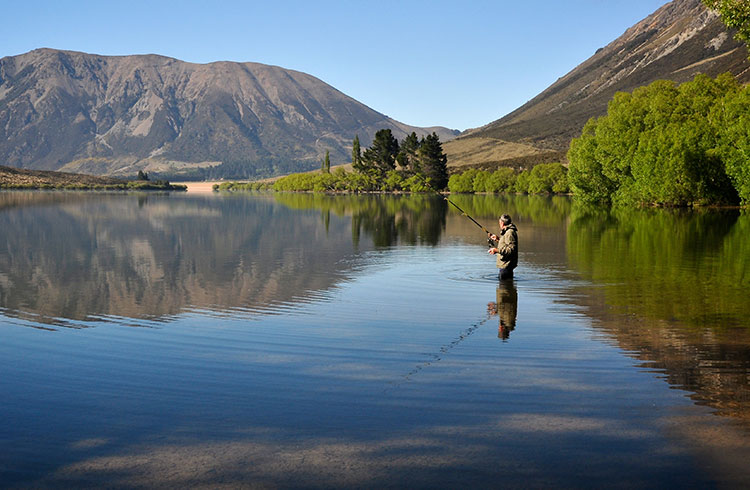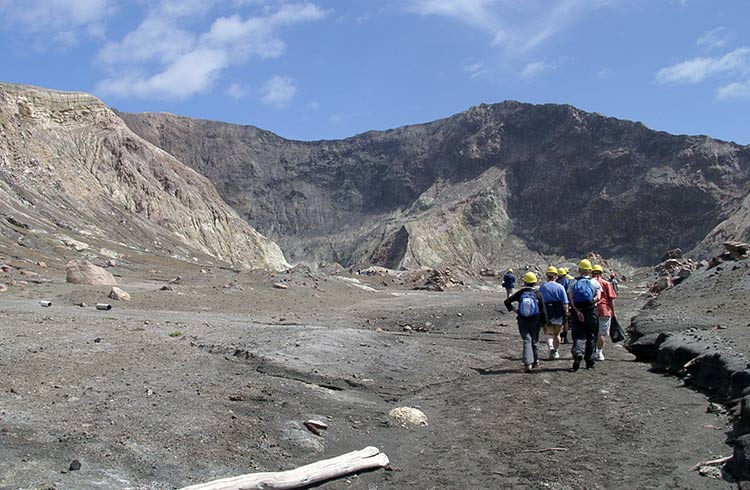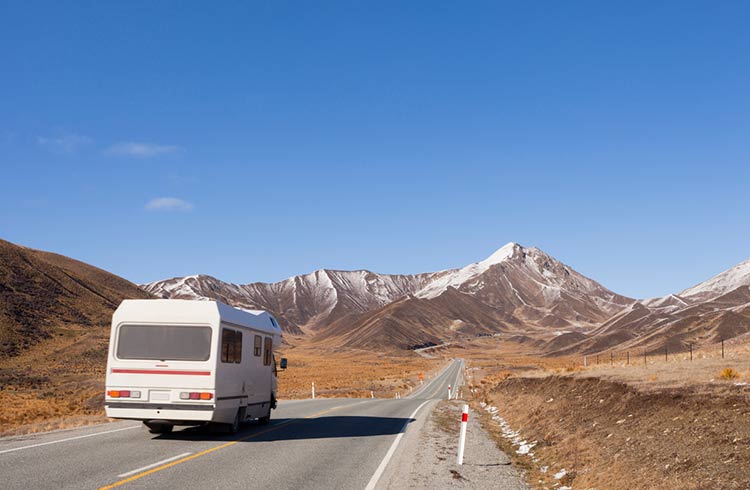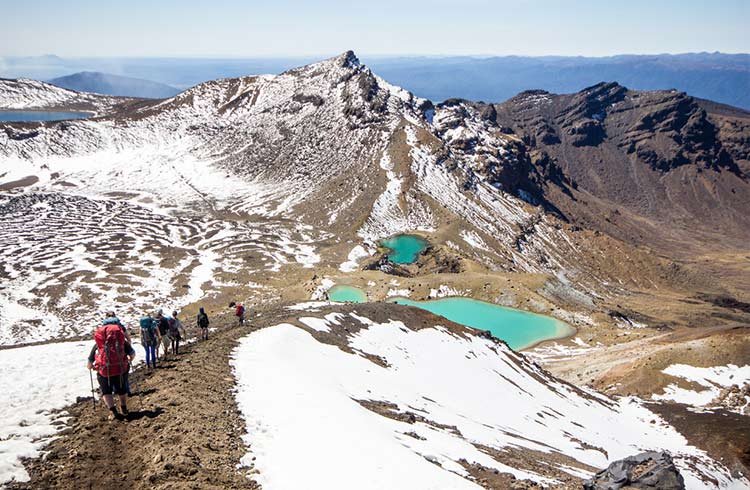What Visitors Should Know about New Zealand Sports
Surfing, rugby, horse racing and fishing. Ant shares his insights on New Zealand's favourite sports.
 Photo © Getty Images/Image by Lesley McEwan Images
Photo © Getty Images/Image by Lesley McEwan Images
Ringa pakia! Uma tiraha! Turi whatia! Hope whai ake! Waewae takahia kia kino! Ka mate, ka mate. Ka ora', Ka ora'. Ka mate, ka mate. Ka ora’, Ka ora’. Tēnei te tangata pūhuruhuru. Nāna i tiki mai whakawhiti te rā. Upane. Upane. Upane Kaupane. Whiti te rā,! Hī!
The resounding words of the world’s most famous challenge: the Haka. In Māoridom, this is the moment the gauntlet is ardently thrown down. The first haka was first performed in 1884 but it wasn’t until 1987 that All Black, Wayne Shelford ramped it up to the fiery spectacle we know and love (and fear) today. Shelford is also famous for having a testicle ripped out during a test match against France, and playing on. Characters like Shelford continue to define the Kiwi sports arenas. Never say die, never lay down; you’re a New Zealander, a ‘Can-Do’ Kiwi.
The Name Game
Kiwi team names even appear competitive. We all know the All Blacks (men’s rugby), and most Antipodeans will know the Silver Ferns (women’s netball). Then there’s the Tall Blacks (basketball), Black Caps (cricket), All Whites (football) and the Black Sticks Men and Women (hockey). In 2005, the NZ badminton team caused a furor when they motioned for their team to be called — what else — the Black Cocks. It flopped.
New Zealand is a small nation of just 4.2 million people. Consider this, as we take a look at the myriad sports they partake in, and consider that almost every sport requires a governing body and a gang of referees, and all of them deserve a raucous crowd. During any one week, 79% of the adult population participates in at least one sport or recreation. Over the course of a year, one in four Kiwi’s volunteer and 40% will take part in an organized competition.
New Zealand is also fuelling their loyal fan base. It hosted the 2011 Rugby World Cup, and the All Whites qualified for the 2010 FIFA World Cup in South Africa, for the first time since 1982.
Surf’s up down under
When we think of surfing, we automatically think of New Zealand’s, West Island (aka Australia), or perhaps Hawaii. New Zealand boasts around 150,000 surfers. Early Māori were seen surfing their waka’s (canoes), planks (kōpapa) and even kelp bags (pōhā) over the breakers. The sport was phased out by prudish missionaries before Hawaiian George Freeth began the national resurgence. Surfers were one of the first alternative cultures to hit Aotearoa (New Zealand); infusing the nation with a typically laidback lifestyle, while they searched for their perfect wave.
Practical sports
New Zealand was perceived as a blank canvas for European immigrants, so competition was imminent. The residual effect is a splattering of practical rural sports, such as sheep shearing. The synonymous fact about New Zealand is the ratio of sheep to humans, which currently stands at 10:1. Established in 1961 to raise the profile of the gruff, and lonesome shearer, the national highlight of the shearing calendar is the Golden Shears (3rd - 6th March 2010, Masterton). Naturally coupled to shearing is another rural celebration; wood chopping has been contested since early Europeans earmarked their favored plots. The settlers needed the land cleared and also the resulting timber to build; down came the axe and up went the trophy cabinets. The success continues today, the World Champion is Aucklander, Jason Wynard.
Two-wheel hero
The epitome of a Can-Do Kiwi is a man who New Zealander’s hold close to their hearts. John Britten (1950-1995) is famous for his super shed story — though he shouldn’t be confused with Burt Munro (The World’s Fastest Indian). Britten and a team of neighbors designed and built the V-1000 motorcycle in his shed. In 1992 he arrived in Daytona to compete with the motorcycle manufacturing giants in the Battle of the Twins race. The bike was a huge success, however, the battery failed going into the last lap and he failed to finish. A year later the bike snatched four world speed records, and in 1994 he returned to Daytona to claim the elusive title. The bike can be seen in Wellington’s Te Papa museum.
Famous Kiwi sports personalities
Britten isn’t the most famous Kiwi in sport. That honour is probably bestowed upon one of these national icons:
Bruce McLaren: A popular, and successful racing car driver, best known today as the founder of the eponymous Team McLaren. Bruce died at the wheel aged just 32, and his legacy lives on in one of the most celebrated racing teams of our day.
Sir Peter Blake: Led Team New Zealand to successive sailing victories in the America’s Cup, he also claimed the coveted Jules Verne Trophy for the fastest circumnavigation of the world in a yacht. Blake was shot and killed by pirates while on an environmental exploration of South America in 1991.
Sir Edmund Hillary: The indomitable mountaineer. Together with his Tibetan/Nepali Sherpa, Tenzing Norgay they became the first climbers known to summit Mount Chomolungma (Everest). Hillary returned time and again to the Himalaya to scale ten more peaks, he also reached the South Pole.
The legend of Phar Lap
Racing is also at the heart of an equine hero: Kiwi racehorse Phar Lap (Thai for Lightning in the Sky). Aussie’s the world over controversially claim him as their own (the chestnut red was trained across the Tasman and dominated races there). Grief was shared on a fateful day in California. Phar Lap hemorrhaged to death after munching through an arsenic-laced lawn, ending a career that saw 37 wins from 51 starts. Divided in death, Phar Lap is apportioned to the Melbourne Museum (hide); Wellington’s Te Papa Museum (skeleton); and the National Museum of Australia in Canberra (heart).
Controversial moments in NZ sport
Controversy is as abundant in New Zealand as it is anywhere. As early as 1905 when The Original All Blacks (or simply, The Originals) toured Britain. They scored an incredible 830 points over thirty-two games, conceding just 39 but amazingly, they lost their game against Wales after the referee disallowed a try.
The most infamous incident occurred during a 1981 One Day International cricket match, against not-so-neighborly Australia. New Zealand needed a ‘six’ to tie the match, but in a premeditated moment of unsportsmanship, the Aussie captain Greg Chappell ordered his brother Trevor to bowl underarm to avoid the possibility. Two years later, during the 1983 Challenger Series for the America’s Cup (the oldest trophy in sport) the Kiwi’s came under fire from the Yanks for using a radical fiberglass hull. The spirit of the coveted cup sank in all too familiar courtroom conundrums.
In July 1981, the South African rugby team arrived for The Springbok Tour. South Africa was in the grip of apartheid, and many New Zealander’s supported the international boycott of South African sport. However rural New Zealand cherishes rugby, where it creates the nucleus of many communities. Thus came the moment when politics met sport, in fanatical riots. As the tour stubbornly continued, the brutality of clashes increased. By the final game in Auckland, the protesters were better equipped than the police, and a circling plane dropped flour bombs and reputedly threatened to crash into the stadium. The nation remains split on whether the tour should have happened, or indeed whether previous All Black tours of South Africa in the years prior should have occurred (when Māori players were forcibly dropped).
Best of British
There’s a healthy Scottish population in New Zealand, and similarities are drawn between the clan system of the Scots and the iwi (tribe) system of the Māori. The small town of Waipu (120km north of Auckland) brings the New Year with the world’s most southerly Highland Games, complete with kilts and cables. January 1 2010 will see the town’s 139th games. At the opposite end of the country, the Scottish sport of curling is strewn across the icy sheets of the wintry south. Lest we forget marching — that regimented parade of high hats and hoops — has been a fully-fledged sport in New Zealand since 1990. The NZ Championships will rally through Rotorua on the North Island from 19-21 March 2010.
Start your engines
Far from the marching brigades, is Kaikohe (pop. 4113). This small town became infamous around the world in 1991 when local kids attacked Santa during the Christmas parade; the 2004 documentary, Kaikohe Demolition regained the affable nature of the town’s population and at the heart of the recovery, was destruction. Demolition Derby isn’t restrained to Kaikohe, but it is another slab of the Can-Do Kiwi attitude. The only rule appears to be that you don’t hit another car’s door, and the winner seems to be the one with a smashed up car, and bragging rights in the natural hot spring.
Fishing, the original New Zealand sport
Almost 17% of New Zealanders enjoy casting out a line, but among all of Aotearoa, there’s just one fisherman whose tale is revered. The whimsical Māori demigod, Māui is credited with creating Aotearoa as we know it today. In a masterful moment, he crafted a fishhook from his grandfather’s magic jawbone, baited it with his own blood and hooked the great fish. And so it is, that the South Island is known as Te Waka a Māui (The Canoe of Māui), and the North Island as Te Ika a Māui (The Fish of Māui) — without which, none of the aforementioned could have occurred.
Related articles
Simple and flexible travel insurance
You can buy at home or while traveling, and claim online from anywhere in the world. With 150+ adventure activities covered and 24/7 emergency assistance.
Get a quote


No Comments